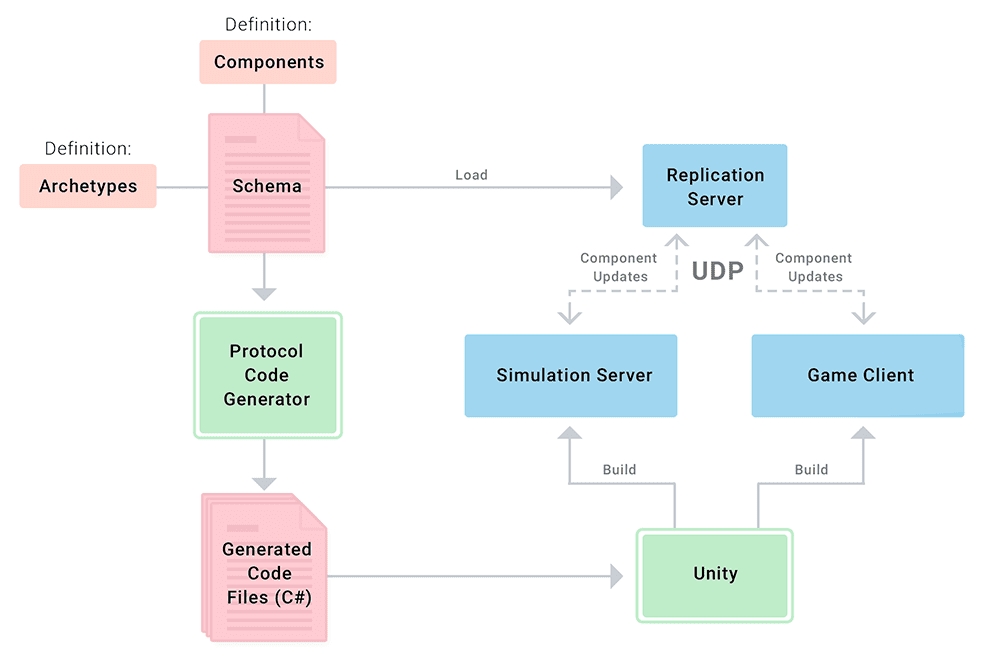Schema explained
The schema is a text file defining the structure of the game world from the network's point of view. The schema is shared between the Replication Server, Simulators and Game Clients. The world is generally divided in components and archetypes.
In other words, the schema defines what, how much, how fast and how precisely data is being exchanged between clients and the Replication Server.

The schema file has two uses in your project:
As a basis for code generation, creating various structs and methods that can be used in your project to communicate with the Replication Server.
As a description for the Replication Server, telling it how the data in your project looks like – to receive, store, and send this data to its Clients.
When using MonoBehaviours and CoherenceSync you often don't need to interact with the schema directly. Here's an example of a small schema:
To learn more about the types and definitions available in a schema, see the specification.
Last updated
Was this helpful?

